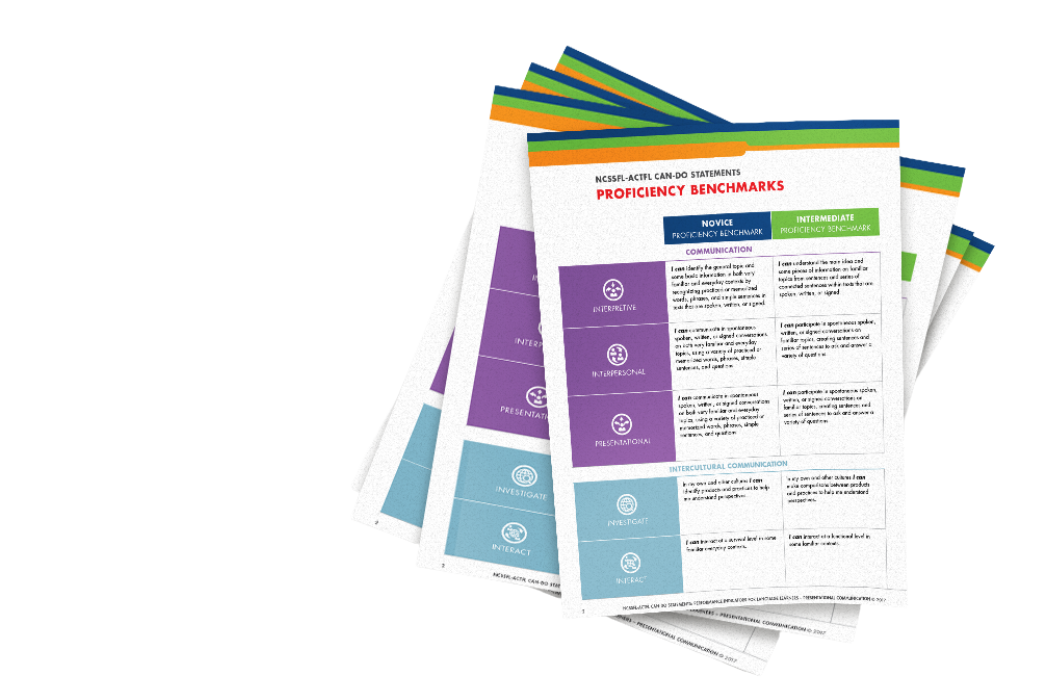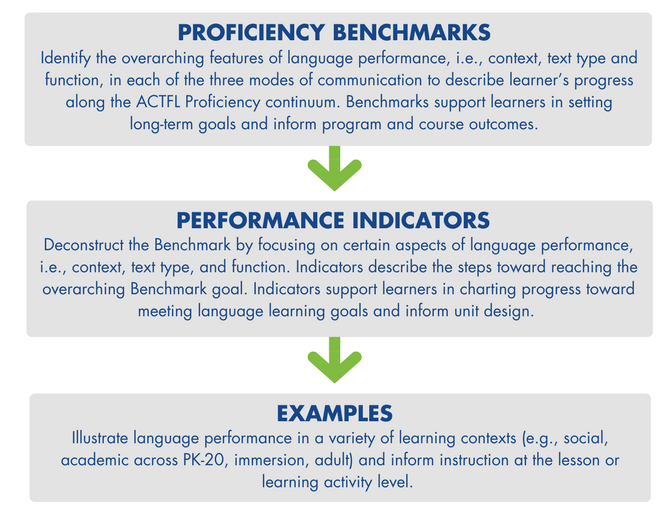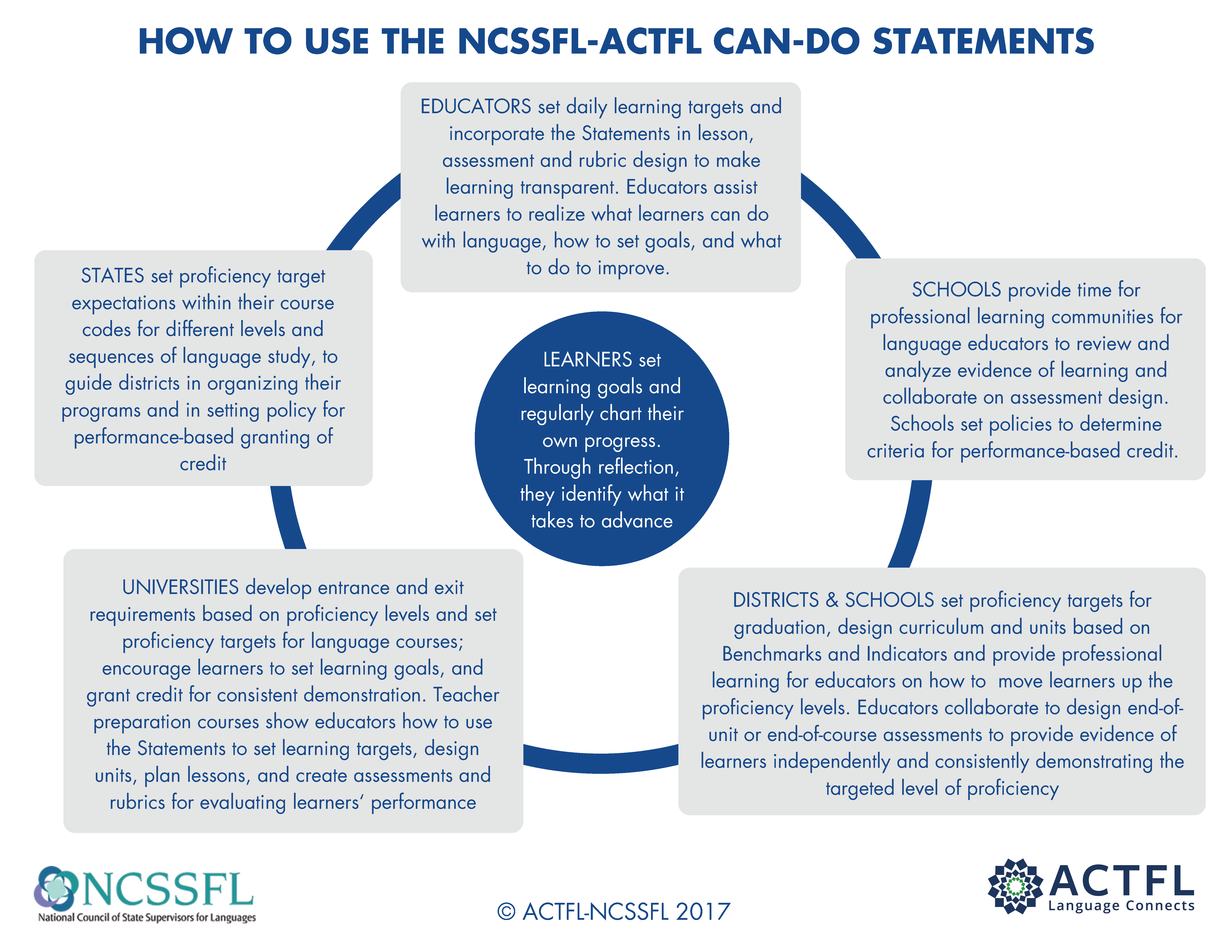What Are the NCSSFL-ACTFL Can-Do Statements?
The 2017 NCSSFL-ACTFL Can-Do Statements, the result of collaboration between the National Council of State Supervisors for Languages (NCSSFL) and the ACTFL guide:
- Language learners to identify and set learning goals and chart their progress towards language and intercultural proficiency;
- Educators to write communication learning targets for curriculum, unit and lesson plans;
- Stakeholders to clarify how well learners at different stages can communicate.
The statements are organized according to the Interpretive, Interpersonal, and Presentational Modes of Communication as described in the World-Readiness Standards for Learning Languages:
- Interpretive Communication: Learners understand, interpret, and analyze what is heard, read, or viewed on a variety of topics.
- Interpersonal Communication: Learners interact and negotiate meaning in spoken, signed, or written conversations to share information, reactions, feelings, and opinions.
- Presentational Communication: Learners present information, concepts, and ideas to inform, explain, persuade, and narrate on a variety of topics using appropriate media and adapting to various audiences of listeners, readers, or viewers.


